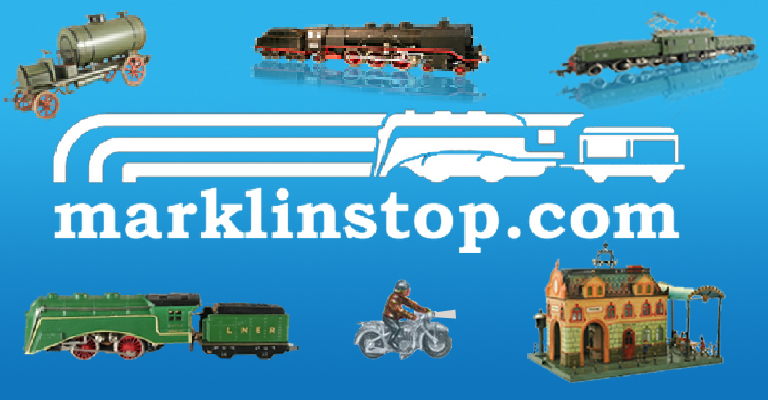The “Optiker Schulz” in Oldenburg, Germany
I was introduced to the quality of Märklin quality at a very young age by my uncle who lived in Germany and came over to the United States with his Märklin trains. We would talk at family gatherings about the large Märklin layout that he built with his family in his hometown in Germany. I was naturally very curious about his Märklin experiences as I had never had to opportunity to talk to a Märklin enthusiast who actually purchased the original trains in the 1950s. He would talk about an optician who sold Märklin on the side of his business. I could picture the optician working in his office as a doctor and then selling quality Märklin trains and toys on the side. I wondered if this dealer supplied a large area in Germany or just sold to local customers in the German city of Oldenburg.
When my uncle recently passed away, I realized that I had never asked him more about his “local supplier” that allowed him to build his large Märklin layout in his home in Germany in the 1950s. Now the detective work would be left up to me to figure out more of the history behind the trains and behind the optician supplier.
The collection of my uncle remained fairly “untouched” since it was packed into approximately 10 military crates that contained track, signals, locomotives, passenger cars, and associated materials required to build the entire layout. In the bottom of one of these crates, I found an old newspaper dated “Oktober 1957.” I looked through the rest of the trains, examined the locomotives and boxes very carefully and found they were all from the early 1950s period and were all marked with a dealer stamp. The stamp was barely readable because the font was so distorted, but I noticed a seemingly misplaced pair of sunglasses to the right of the stamp. The sunglasses puzzled me and so I thought, “The dealer might have been near a beach?.”

Dealer Stamp on instruction sheet from 1959
I could not figure out why this dealer stamp had sunglasses on it. It provided no other useful information beside this strange image of sunglasses. Later when I brought the trains home for servicing and further examination, I noticed another piece of information that brought everything together. While servicing the trains, I glanced up at my display case and saw on the box of my small TM 800 locomotive a dealer sticker which read “Optiker Schulz.”

Optiker Schulz dealer sticker
I could not believe I hadn’t put it together before, “Optiker” means optician in German and I remembered the story my uncle had told me about the Marklin supplier who was an optician. Then, the sunglasses! It all fits together. In the early 1950s, the Marklin dealer used a dealer sticker that had “Optiker Schulz” and then he later moved to a dealer stamp with the sunglasses on it.
A few Google searches later and I found the original “Optiker Schulz” building and of course, it is located in Oldenburg, Germany. As almost every firm in Germany, the roots of this building and the family’s history reach far into the 1800s when the company first opened in 1857. The company is still in operation today so surely their selling of Marklin trains in the 1950s is certainly possible.
Here is the building today:

The Optiker Schulz building in Oldenburg, Germany


Mention of Oldenburg has brought back one of my earliest recollection of Marklin Trains. As a small boy in the 1950’s my father was in the British Army stationed at Oldenburg. I used to visit in the holidays frm my school in the UK. I remember saving my Christmas money to buy second hand marklin items from a shop in the centre of town. I wonder if it was the same shop. I still have a 332 and 314 model purchased there.
Geoff
From my own personal experience in Germany back in the day, I can tell you something about opticians who sold high quality technical toys besides their main business of selling spectacle eye frames and fitting prescription and non- prescription optical glass to the frames. In Germany, you would go to an optician after you had visited an optometrist, who was a doctor and would write a prescription for corrective spectacles which you then took to the optician who would make your corrective spectacles with the selected frames from his shop, all at a price. Today in the U.S. this process is usually combined in one shop, the optometrist and the optician is at one location.
The optician in Germany was a skilled craftsman in optics, that being his main business, but many opticians since at least the 1930’s in Germany, would sell high quality technical toys such as Maerklin trains, steam toys, construction sets and the like. There were other unusual outlets for toy trains and technical toys such as at the “Elektrogeschaeft”, the shop which sold electrical goods, appliances and repair, and also the “Kolonialwarenladen”, the shop which sold housewares and such and often toys and trains, and also the “Andenkenladen”, the shop which sold souvenirs and trinkets in tourist trap areas which often sold toys and trains, and even in the isolated villages and sometimes in the cities the “Schreibwarengeschaeft”, the stationery store, and the “Tabakwarenladen”, the tobacco shop, would sell toys and sometimes even trains.
Regards,
Dale Trader
Collector of German trains and toys for 50 years, most of it bought from various diverse retail outlets in the cities and villages of Germany, France, Austria and Switzerland
Seems very likely that diverse technically orentientated shops also sold Märklin in Germany… In my childhood (60:s in Sweden), I bought most of my Märklin from the hardware store, some in department stores and even one wagon from a tobacconist…